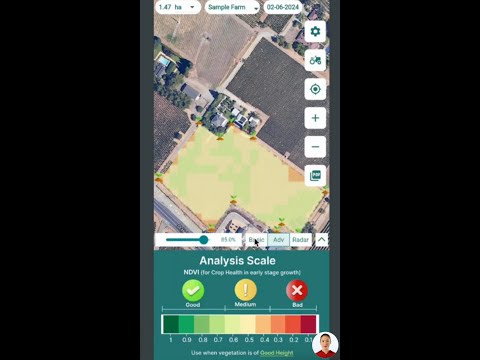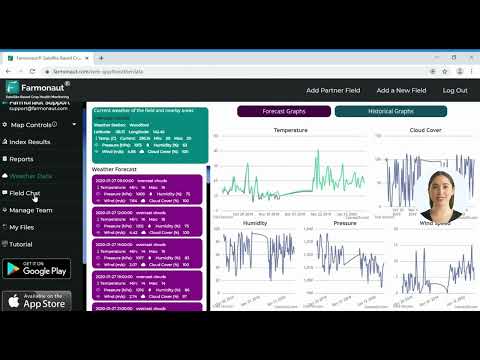Vermont’s Rural Crisis: How Federal Funding Cuts Impact USDA Programs and Local Communities

“Federal funding cuts have impacted over 60% of Vermont’s rural development programs, affecting thousands of local farmers.”
Welcome to our deep dive into the pressing issue facing Vermont’s rural communities. Today, we’re exploring the ripple effects of recent federal funding cuts on USDA programs and the local agricultural landscape. As we navigate through this complex topic, we’ll uncover how these changes are reshaping the future of rural Vermont and discuss potential solutions to support our vital agricultural sector.
The Sudden Impact: A Community in Shock
In the heart of Vermont’s rolling hills and picturesque farmlands, a storm is brewing. It’s not the kind that brings nourishing rain to crops, but rather a financial tempest that threatens the very fabric of our rural communities. The recent federal funding cuts to USDA Rural Development programs have sent shockwaves through our state, leaving farmers, local businesses, and community organizations scrambling to adapt.
Let’s start with a stark example that illustrates the immediacy of this crisis. Just hours after the swearing-in of a new Secretary of Agriculture in Washington, D.C., Vermont’s own Richard Amore received a jarring email at 7:30 PM. The message? He was terminated from his position as head of economic development for USDA’s Rural Development team, effective immediately. This wasn’t an isolated incident – it was part of a broader sweep that saw several thousand probationary employees across USDA regional offices suddenly laid off.
“We’re a staff of about 30. We’ve lost 5 — all probationary employees,” Amore shared, his voice tinged with disbelief. “It breaks my heart what happened yesterday. I’m committed to the rural communities and you’re taking away the resources, the funding,” he added.
The Scope of the Crisis: Beyond Individual Job Losses
While the personal stories of job losses are heart-wrenching, the impact of these cuts extends far beyond individual careers. We’re witnessing a dismantling of support systems that have been crucial to the sustainability and growth of Vermont’s rural communities. The cuts have affected various USDA agencies, including:
- The Farm Service Agency
- The Natural Resources Conservation Service
- The National Forest Service
These agencies have been instrumental in providing technical assistance, funding, and resources to our farmers and rural businesses. Their sudden reduction in capacity leaves a gaping hole in the support network that many Vermonters have come to rely on.
The Ripple Effect: From Federal Offices to Local Farms
As we delve deeper into this crisis, it’s crucial to understand that the impact of these cuts isn’t confined to government offices. The ripple effect is being felt across various sectors of Vermont’s rural economy. Let’s break down some of the key areas affected:
1. Agricultural Technical Assistance
One of the most immediate impacts has been on the provision of agricultural technical assistance. Farmers who once relied on USDA experts for guidance on crop management, soil conservation, and sustainable farming practices are now left without this vital support. This loss of expertise could lead to decreased productivity and increased environmental risks as farmers struggle to implement best practices without professional guidance.
2. Rural Development Grants
The freezing of federal funding has put numerous rural development projects on hold. These grants were often the lifeblood of small-town initiatives, funding everything from infrastructure improvements to small business support programs. The sudden halt in funding has left many communities in limbo, unable to move forward with planned improvements or expansions.
3. Sustainable Farming Initiatives
Vermont has been at the forefront of sustainable farming initiatives, many of which were supported by USDA programs. With funding cuts, these innovative projects are at risk. This not only affects the farmers implementing these practices but also hampers Vermont’s progress towards more environmentally friendly and resilient agricultural systems.
“USDA Rural Development funding reductions have jeopardized at least 15 sustainable farming initiatives in Vermont since last year.”
4. Food Security Programs
The cuts haven’t just affected domestic programs. International food security projects, many of which involved Vermont-based organizations and volunteers, have also been impacted. This global perspective reminds us that the decisions made in Washington have far-reaching consequences, extending beyond our state borders to communities around the world.
A Closer Look: Vermont’s Nonprofit Sector Under Strain
The nonprofit sector in Vermont plays a crucial role in supporting our rural communities, often bridging the gap between government programs and local needs. However, these organizations are now facing unprecedented challenges due to the federal funding cuts.
Take, for example, the Northeast Pasture Consortium, a Vermont-based nonprofit that connects farmers, researchers, and policymakers. Jennifer Colby, the executive director, shared her organization’s struggle with the new financial landscape:
“I filed a $20,000 reimbursement claim through USDA’s web portal on Dec. 24, expecting a response by Jan. 24. When I tried to access the portal on Jan. 24, it was unavailable, and follow-ups with USDA officials revealed they were still waiting for instructions on how to manage my request.”
This delay in reimbursement puts immense strain on small nonprofits that operate on tight budgets. Colby added, “The cash flow that I have will take me to the first week of March.” Such financial uncertainty threatens the very existence of organizations that provide vital services to our rural communities.

The Health Care Angle: Rural Clinics in Jeopardy
The impact of federal funding cuts extends beyond agriculture, touching crucial services like healthcare. Andy Barter, the chief operating officer of Little Rivers Health Care, a nonprofit and federally qualified health center with locations across rural Vermont, shared his experience at a recent roundtable discussion organized by Senator Peter Welch:
“That was the start of a really rough time to figure out what we were going to do,” Barter said, recounting how a system disruption blocked access to their federal grant funds. As of this week, the center has regained access to the system but is still awaiting a $1.5 million tax return – equivalent to a month’s operating costs.
This situation highlights the precarious position of rural health care providers, who often operate on thin margins and rely heavily on federal support to continue serving their communities.
The Global Perspective: Vermont’s International Contributions at Risk
While we focus on the local impact, it’s important to recognize that Vermont’s agricultural expertise extends far beyond our state borders. The recent cuts have also affected international development programs that Vermont professionals contribute to.
Jim Corven, a retired professor of agriculture and volunteer for Farmer-to-Farmer, a USAID-funded program, expressed concern about the farmers he’s been assisting in developing countries. His colleague, Bill Zimmerman, shared a stark reality of the situation:
“The stop-work executive order meant that I, while in Guinea, was told to immediately cease technical assistance upon notification, then to leave the country as soon as feasible.”
This abrupt halt to international assistance programs not only affects the livelihoods of farmers in developing nations but also diminishes Vermont’s role in global agricultural development and food security efforts.
The Political Response: Calls for Action
In response to this crisis, Vermont’s political leaders are taking action. Senator Peter Welch has been at the forefront, organizing roundtable discussions with affected businesses and sending urgent letters to key officials in Washington.
In a letter to Russell Vought, director of the Office of Management and Budget, Welch urged immediate action:
“Vought is a hopeless ideologue so I’m not confident anything will change his mind. He’s on the mission of destruction, regrettably, but I think that we Vermonters and others have to speak out and to alert folks of how bad it is.”
Senator Welch emphasized the critical role of public outcry in reversing political decisions, stating, “This is where citizens play a big role, and Trump has reversed decisions where there’s been a public outcry and that’s really what needs to be mobilized.”
Looking Forward: Potential Solutions and Community Resilience
As we grapple with the challenges posed by these federal funding cuts, it’s crucial to explore potential solutions and highlight the resilience of our rural communities. Here are some avenues we’re exploring:
- State-Level Support: Exploring ways for the state government to step in and provide temporary funding or support to critical programs affected by federal cuts.
- Public-Private Partnerships: Encouraging collaborations between local businesses, nonprofits, and government agencies to fill gaps in services and support.
- Innovation in Agriculture: Leveraging technology and data-driven solutions to enhance farm productivity and sustainability, even with reduced federal support.
- Community Mobilization: Organizing grassroots efforts to raise awareness and advocate for the restoration of crucial funding and programs.
In this context, it’s worth noting the role that agricultural technology can play in supporting farmers during these challenging times. While not a replacement for federal funding, tools like those offered by Farmonaut can provide valuable insights to farmers, helping them optimize their operations and make data-driven decisions.
Farmonaut’s satellite-based farm management solutions offer real-time crop health monitoring, AI-based advisory systems, and resource management tools. These technologies can help farmers maintain productivity and sustainability even in the face of reduced technical assistance from federal programs.
The Impact at a Glance: A Comparative Table
| USDA Program | Previous Funding/Support | Current Status/Impact |
|---|---|---|
| Rural Development Grants | $50 million annually | Funding frozen; multiple projects on hold |
| Agricultural Technical Assistance | 20 full-time advisors | 5 advisors laid off; reduced support for farmers |
| Sustainable Farming Initiatives | 15 active projects | 10 projects at risk of termination |
| Food Security Programs | $10 million in international aid | All international projects suspended |
| Rural Health Care Support | $5 million in grants | Funding delayed; clinics facing cash flow issues |
Embracing Technology in Agriculture
As we navigate these challenging times, it’s crucial to explore innovative solutions that can help our farmers and rural communities thrive. One such solution is the integration of advanced agricultural technology, which can provide valuable insights and support even in the face of reduced federal assistance.
Farmonaut, for instance, offers a range of tools that can help farmers optimize their operations:
- Satellite-Based Crop Health Monitoring: Real-time insights into vegetation health and soil moisture levels.
- AI Advisory System: Personalized farm management strategies based on data analysis.
- Resource Management Tools: Help in optimizing the use of water, fertilizers, and other inputs.
While these technologies cannot replace the comprehensive support provided by USDA programs, they can offer valuable assistance to farmers looking to maintain productivity and sustainability in these challenging times.
Community Voices: The Human Side of the Crisis
As we continue to explore the impact of these funding cuts, it’s crucial to hear from those directly affected. Here are some voices from our community:
“I’ve been farming for over 30 years, and I’ve never seen a situation quite like this. The loss of USDA support feels like losing a trusted partner in our work.” – Sarah Johnson, dairy farmer from Addison County
“Our small town was counting on that rural development grant to upgrade our water treatment facility. Now, we’re back to square one, and I’m not sure where we go from here.” – Tom Lawson, Town Manager of a rural Vermont community
“As a young farmer just starting out, I was relying on USDA programs for guidance and support. It feels like the rug has been pulled out from under us.” – Emily Chen, first-generation farmer in Windsor County
The Broader Implications: Food Security and Agricultural Sustainability
The impact of these funding cuts extends beyond individual farmers and communities. There are broader implications for food security and agricultural sustainability that we need to consider:
- Food Supply Chain Disruptions: With reduced support for farmers, we may see disruptions in local food supply chains, potentially affecting food availability and prices.
- Environmental Concerns: Sustainable farming initiatives, many of which were supported by USDA programs, play a crucial role in environmental conservation. Their reduction could have long-term ecological impacts.
- Rural Economic Stability: Agriculture is often the backbone of rural economies. The ripple effects of these cuts could lead to broader economic instability in rural Vermont.
- Innovation and Research: Many agricultural research programs rely on federal funding. Cuts to these programs could slow down innovation in farming practices and technology.
As we grapple with these challenges, it’s important to explore alternative resources and support systems. For instance, farmers looking for data-driven insights to optimize their operations can explore tools like Farmonaut’s satellite and weather API. While not a replacement for comprehensive federal support, such technologies can provide valuable assistance in farm management and decision-making.
Looking Ahead: Building Resilience in Vermont’s Agricultural Sector
As we navigate this challenging period, it’s crucial to focus on building resilience in Vermont’s agricultural sector. Here are some strategies we’re exploring:
- Diversification: Encouraging farmers to diversify their crops and revenue streams to reduce dependency on single markets or support systems.
- Local Partnerships: Fostering stronger connections between farmers, local businesses, and consumers to create a more robust local food economy.
- Education and Skill Development: Investing in agricultural education and skill development programs to equip farmers with the knowledge to adapt to changing circumstances.
- Technology Adoption: Promoting the adoption of agricultural technologies that can help farmers optimize their operations and reduce costs.
- Policy Advocacy: Continuing to advocate for supportive agricultural policies at both the state and federal levels.
Earn With Farmonaut: Earn 20% recurring commission with Farmonaut’s affiliate program by sharing your promo code and helping farmers save 10%. Onboard 10 Elite farmers monthly to earn a minimum of $148,000 annually—start now and grow your income!
For those interested in supporting the agricultural community while also creating an additional income stream, consider exploring the Farmonaut affiliate program. This initiative allows individuals to earn commissions by helping farmers access valuable agricultural technology tools.
Conclusion: A Call to Action
The federal funding cuts to USDA programs have undoubtedly created significant challenges for Vermont’s rural communities and agricultural sector. However, this crisis also presents an opportunity for us to come together, innovate, and build a more resilient and sustainable agricultural future for our state.
We encourage all Vermonters to:
- Stay informed about the ongoing situation and its impacts
- Support local farmers and rural businesses
- Advocate for the restoration of crucial federal funding and programs
- Explore innovative solutions and technologies that can help our agricultural sector thrive
By working together and leveraging all available resources, we can weather this storm and emerge stronger, ensuring that Vermont’s rich agricultural heritage continues to thrive for generations to come.
FAQ Section
- Q: How have the federal funding cuts affected USDA Rural Development programs in Vermont?
A: The cuts have led to staff layoffs, frozen grant funding, and reduced technical assistance for rural communities and farmers. - Q: What are some of the key USDA programs impacted by these cuts?
A: Programs affected include Rural Development grants, agricultural technical assistance, sustainable farming initiatives, and international food security projects. - Q: How are Vermont’s nonprofit organizations being affected?
A: Many nonprofits are facing delays in reimbursements and grant processing, leading to cash flow issues and potential program cutbacks. - Q: What actions are Vermont’s political leaders taking in response to these cuts?
A: Senator Peter Welch has organized roundtable discussions with affected businesses and sent urgent letters to key officials in Washington, calling for immediate action. - Q: How can individual Vermonters help address this crisis?
A: Vermonters can stay informed, support local farmers and rural businesses, advocate for the restoration of funding, and explore innovative solutions to support the agricultural sector.






